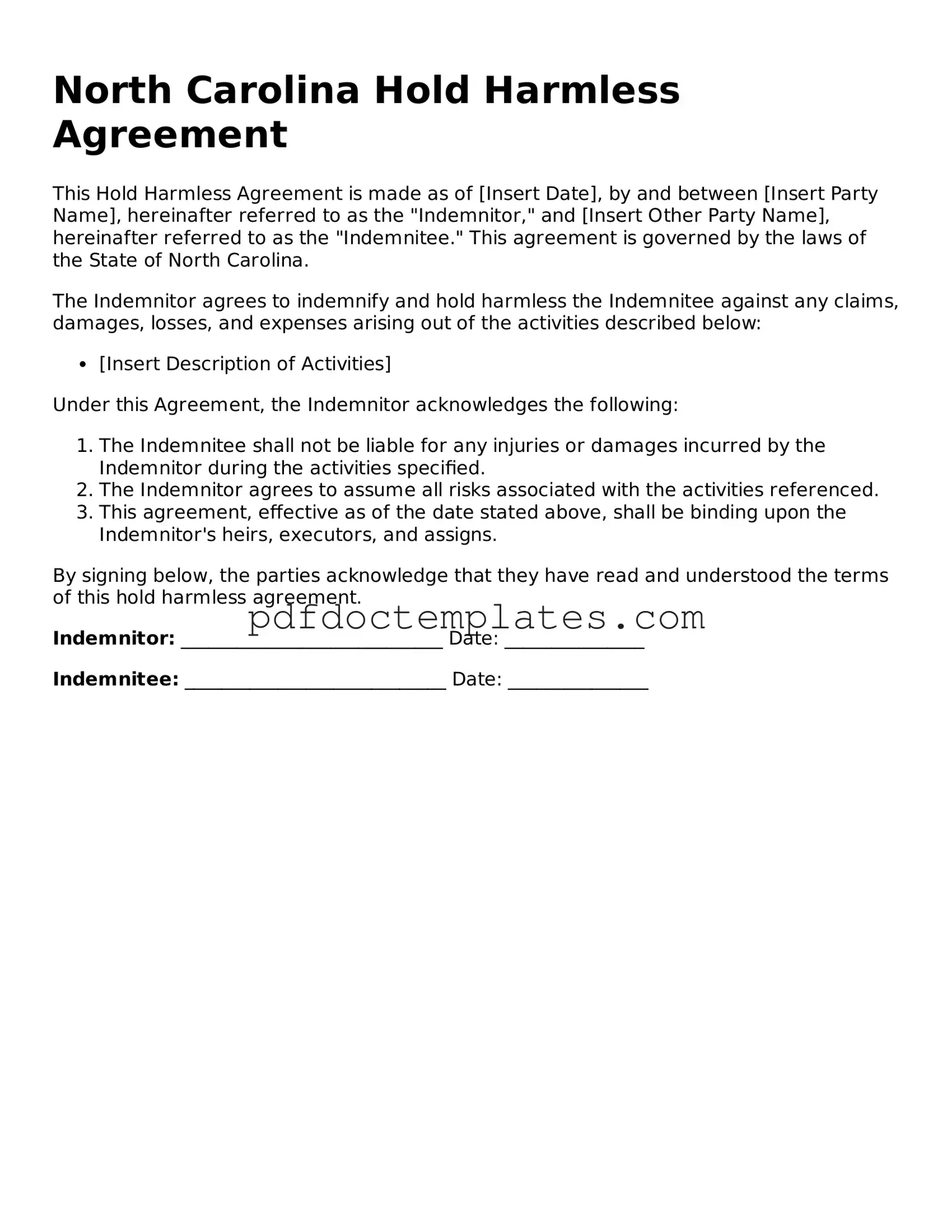North Carolina Hold Harmless Agreement
This Hold Harmless Agreement is made as of [Insert Date], by and between [Insert Party Name], hereinafter referred to as the "Indemnitor," and [Insert Other Party Name], hereinafter referred to as the "Indemnitee." This agreement is governed by the laws of the State of North Carolina.
The Indemnitor agrees to indemnify and hold harmless the Indemnitee against any claims, damages, losses, and expenses arising out of the activities described below:
- [Insert Description of Activities]
Under this Agreement, the Indemnitor acknowledges the following:
- The Indemnitee shall not be liable for any injuries or damages incurred by the Indemnitor during the activities specified.
- The Indemnitor agrees to assume all risks associated with the activities referenced.
- This agreement, effective as of the date stated above, shall be binding upon the Indemnitor's heirs, executors, and assigns.
By signing below, the parties acknowledge that they have read and understood the terms of this hold harmless agreement.
Indemnitor: ____________________________ Date: _______________
Indemnitee: ____________________________ Date: _______________
